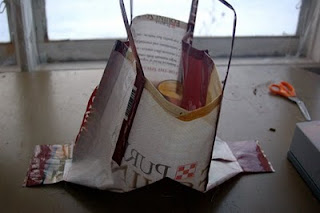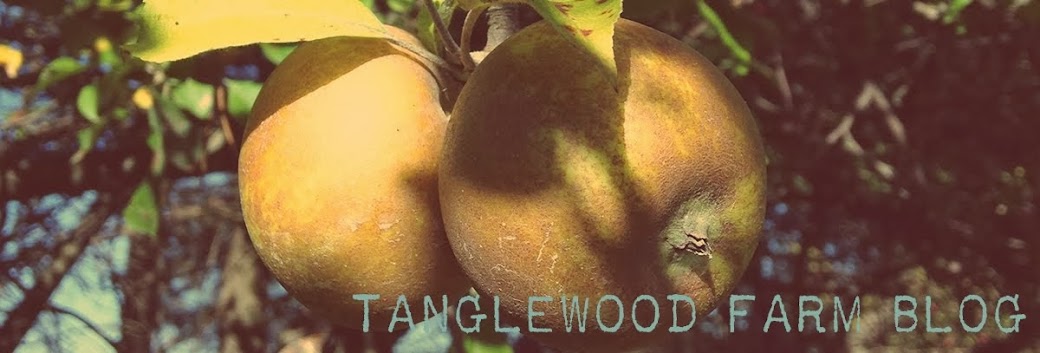
One of the biggest challenges in my endeavor to cut down on my plastic dependence is in the animal husbandry aspect of my life. I am the happy and proud caretaker of eight horses (who live down the road at Constantine Farms), three sheep and a handful of ducks, not to mention our dogs and cat.
During the summer nearly all of my horses, except for anybody who is growing (my five and six year old national show horses) or old (my 18 year old arabian school horse), survive healthily by eating grass and hay, supplemented with selenium rich mineral blocks since our area is selenium deficient. Because of this I go through very little grain, and consequently livestock-related plastic.
Winter is another matter, though. My horses are all hard working, and while they get ample hay, they require roughly 3-4lbs of grain per beast per day to keep fat over their ribs during the cold months (this is still very little compared to most horses). Our grain bags used to be packaged in paper, and while this meant I occasionally had to deal with bag breaks in the car and spilled grain, to me it was worth it. The paper was biodegradable and since it was often unbleached I could even use it as mulch to keep weeds down with very little concern for what was leeching into my gardens. They switched all grain to plastic bags roughly six months ago and I've been at a loss for what to do with the waste. For the most part, they've been used for garbage bags and ultimately thrown away.
Two nights ago I was struck with the idea to find new uses for them, after reading about Rodale's No Plastic February challenge. They're made out of a sturdy woven plastic that seems to hold up to a lot of wear, regardless of surrounding temperatures.
My first idea is to use them for grocery bags. I hate the idea of buying those 99 cent heavy duty reusable plastic bags because ultimately you're buying plastic. The fabric bags are great, but they are expensive or require some serious skill to make. Using the feed bags allows me to get two grocery bags out of each feed bag, saving money and using what would otherwise be thrown away. I do apologize as this isn't a particularly well photographed or articulated tutorial. Please let me know if you have any other questions, and be sure to check back soon for more upcycle patterns!
DIY: Grocery Bags from woven plastic feed bags
Start with a clean plastic feed bag. They're easy to hose out during the summer. During the winter, I just worked with mine dirty and cleaned it out after I finished the project.

Cut the feed bag in half, so that you have a front and back. Most bags have great creases for this and will indicate perfectly where to cut. Then trim two strips off of what used to be the back of the bag, for handles. These can be as wide as you like. You will be sewing these strips to create more finished straps, so make them two to three times wider than you want the final strap.

Fold the bag in half and cut slits roughly two inches from the center of the bag. Cut these slits two inches long.

When you unfold your bag, the cuts should look roughly like this.

Then hem the two ends (along what would be the top and bottom of the original feed bags).

I awesomely forgot to photograph when I put the handles on, so this photo contains two steps. First, stitch the handles to the front or back of the plastic while it is still flat. You can reinforce the handles as much as you like. This is the part my sewing machine disliked the most and I had some difficulty keeping the tension balanced but eventually it worked. After attaching the handles, fold the bag in half, inside out. Then stitch across the right and left sides, being careful not to stitch across the original slits you put in the bag. Those slits will become the square bottom of your bag.

I know this photo is hard to see but once your sides are stitched work the bag around until your bottom flaps are flush with the two side flaps that you just stitched together. I'm sorry if this is hard to understand. It's much easier if you just look at it and fiddle around with it until you get it sorted out.

Your final sewing will be across the bottom flap, connecting the bottom flap to the side flaps.

When you finish, you can open the bag and it should look something like this. The last thing you need to do now is flip it right-side out!

Obviously this tutorial is pretty vague, but if you can get through making your first bag, you should be able to then alter the pattern by adding pockets, changing dimensions and fiddling with measurements to make a wide variety of recycled/upcycled objects.
Please let me know if you come up with any additional suggestions for this project, as well as any other ideas for reusing feed bags.
Thanks for visiting! I'll be posting more upcycling patterns and suggestions over the next few weeks to help deal with the more unavoidable plastics in our lives.




Hello! I love this recycling idea! Ihave sent you an e-mail with a sewing tip re the bottom corners. I couldn't attach a drawing to a comment, thus the e-mail. :-)
ReplyDeleteGreat post. Thanks! I've been thinking of doing something similar with our chicken food bags, but I'm not a very experienced sewer, so your tips help alot.
ReplyDeleteThank you, thank you... on vacation last year we saw bags like this being sold for $10... I have been saving my grain bags ever since and just now have the time to stitch them. There is a fund raiser for abandoned horses in our area next week and I plan on donating all stitched bags that I can get done by next week. I just needed the pattern. thanks again.. Best to you.. Pam
ReplyDelete